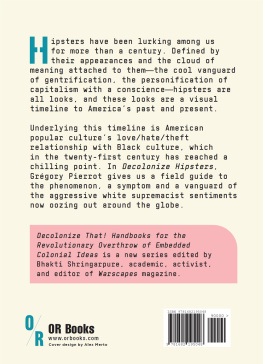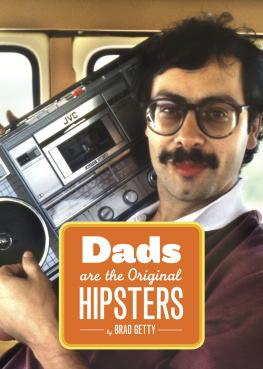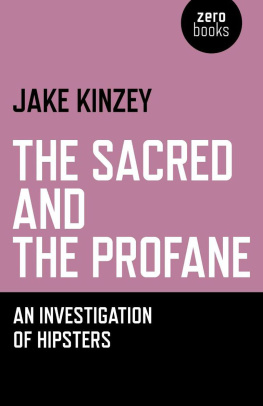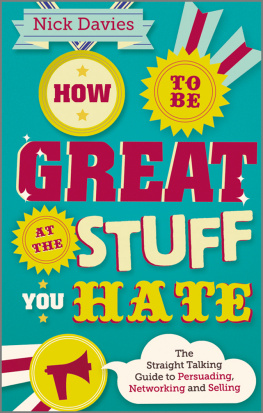Table of Contents
This book is dedicated to:
EP, Chopper, Jason Schwartzman, Hearst, BT, Ralph Macchio,
PhD, I Hate Everything Hipster, Photog, Leather Jacket,
Tats and all the other cruel, dumb or otherwise misguided
men weve encountered in Brooklyn.
We couldnt have done it without you.
THE BEGINNING
[ABSTRACT]
The following study investigates the pressing and urgent question: What is a hipster? Through careful consideration of and immersion in the ethos of the subculture known as hipsterdom, the authors have gathered a collection of both observations and found documents demonstrating the disposition and character of the modern-day hipster (circa 2010). Results revealed that hipsters are largely negative creatures who gain power and authority by putting things (e.g., music, living situations, apparel, you) down. The authors subsequently conclude that the hipster is more accurately defined by what he or she hates than by what he or she likes.
Keywords:
Subculture
Hipster
Negative
Hate
You
INTRODUCTION
I know its not your thing to care/I know its cool to be so bored.
Benjamin Scott Folds, The Battle of Who Could Care Less
What is a hipster? The word itself has enjoyed a renaissance of late (early 00s to the present), although it has been in the lexicon for more than 60 years. Merriam-Webster defines the word thusly:
Main Entry: hip-ster
Pronunciation: \hip-star\
Function: noun
Date: 1940
: a person who is unusually aware
of and interested in new and
unconventional patterns (as in
jazz or fashion)
We, the authors, agree with the above definition. The essence of the hipster is novelty and unconventional avenues of thought. Still, the urge to veer off the beaten, primrose-lined path is rooted in one constant, undying urge: to be counter to the culture at large (hence the term counterculture).
Such an abhorrence of society brewed within the rumbling stomachs of the Lost Generation of the 20s, who took off to Europe to escape the rank atmosphere of American banality (Hemingway didnt call his autobiographical literary odyssey A Moveable Feast because he was predicting the advent of fast food). Then came the hipsters of the 50s, best explicated in Norman Mailers controversial yet frighteningly timeless essay, The White Negro: Superficial Reflections on the Hipster, in which the journalist describes a group of shiftless elitists uprooted and disillusioned by war and turmoil turning to the fringes of society, embracing utter nihilism and becoming, as Mailer puts it, philosophical psychopaths. In short: The 1950s hipster consciously shucked off the bounds of society. Sound familiar?
Although Mailers essay is riddled with antiquated references (and dude uses the term square more times than a geometry book), the hipster described in this 1957 work is basically the hipster of today. Forged in a fire fed by hippies (with their languorous nature, disdain for bathing and vehement rejection of their parents), punks (with their tight pants, appropriation and destruction of other cultures, and self-conscious snarls) and grunge kids (with their plaid shirts, sloped shoulders and wretched love lives), the modern hipster fumed angstily in his or her respective enclave, until, fueled by a special form of ennui bred from war, recession and the rise of the Twitter celebrity, they flooded the scene in full force around the end of the aughts.
The mainstream medias initial response: fear and bafflement. Adbusters promptly deemed modern hipsters the end of Western Civilization. Time looked askance at their grandma sweaters and affinity for PBR. But soon enough, the term took on a complimentary tone. Fashion writers gushingly applied the moniker to gussiedup Vogue editors. Media sources began SEOing the hell out of the trendy term, and scores of hipster-themed blogs made their way onto what is playfully called The Internets. Popular gossip sites such as Gawker called for the death of the word not too long after magazines such as Time Out: New York shouted for the demise of the concept. Yes, it seems that the age of the hipsteror at least the plaid-clad, Williamsburg-dwelling, indie rock-loving varietycould be drawing to close.
Does that mean that the concept itself is kaput? Well, if the authors believed that, we would have given up this noble pursuit long ago and written a lovely book about how to adopt a kitten or glaze potssomething much less arduous to investigate. Even though superficially the hipster of Mailers day is no more (the modern-day variety does not, in fact, wear zoot suits and dig jazz), the urge to be everything that society is not will live on. The hipster of the future may not read Bukowski and walk about with a fedora perched on his shaggy head, but you best believe he will probably dislike about 98 percent of the people currently reading this book.
METHOD
Not content to merely observe and blandly comment on the population that we have chosen to study, your humble guides have taken it upon ourselves to infiltrate their society. Bartz likens the undertaking to the invaluable investigations of Jane Goodall; Ehrlich fancies the expedition as fitting into the realm of Hunter S. Thompsons Gonzo journalism. Either way, we created this tome via extensive immersion research.
We didnt initially set out to study this intriguing creature; we merely found ourselves interacting with males of the species after moving to New York, where we began wading in the morass known as the hipster dating scene. We were baffled by the backward world our suitors inhabited, since we had just left a structured collegiate environment where beer pong and the Greek system sadly reigned supreme.
After just one year, we had amassed a large enough stable of stories and exes to draw statistically significant conclusions. For Bartz, there was a cadre of artists with an impressive array of side careers: a former American Apparel model/ graphic designer, a neo-Marxist grad student/guitarist and a painter/ falafel chef/pot dealer. Ehrlich, meanwhile, dated what amounted to an entire indie band: lead singer/ guitar player, bassist, drummer and even merch salesman. What did all these men have in common? Besides the innate inability to return a text message or end a relationship in a proper manner, they all possessed a permeating ennui about this thing we call life.
Further exploration into the hipster realm via parties, coffee shops, concerts and jaunts in McCarren Park confirmed that that weary indifference was not limited to the males of the species, but also characterized what the poetically inclined refer to as the fairer sex. Conversations with hipsters of either gender often centered on topics such as Why this band is played-out, How boring this party is, and/or How all relationships are doomed to fail because life is so crazy right now.
Thus, through the lens of bad dates past, we mused our way to a revelation. We began to see the entire hipster subculture with a discerning eye, recognizing it as a brooding mass of cool-hunters who base their life philosophies on general dislike and self-imposed sadnessi.e., haters.
RESULTS
By their very nature, hipsters are changeable beasts, chimeras straining against the bars of societys menagerie with the intense and inexhaustible urge to shed one skin and don a more novel persona. While the average bodys cells regenerate every seven years, rendering that human (supposedly) an entirely new person, the hipsters process of reincarnation is much quicker.














